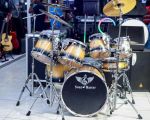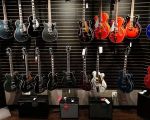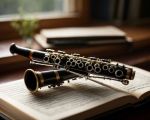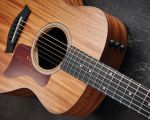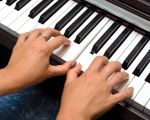Choosing the Best Orchestral Percussion Instruments for Students
As a student exploring the world of orchestral percussion, finding the right instruments can be a bit overwhelming. The vast range of percussion instruments available can make it difficult to decide where to start. In my journey of teaching and playing orchestral percussion, I've discovered that understanding the unique characteristics of each instrument is key to making the right choice. Whether you’re just beginning or you're looking to expand your collection, there are a few standout percussion instruments that are ideal for students.
1. Snare Drum: The Heartbeat of Percussion
The snare drum is undoubtedly one of the most important percussion instruments in any orchestra. As a student, mastering the snare drum will lay the foundation for many other percussion skills. I remember when I first started playing it; the sharp, crisp sound of the snares rattling was a defining moment in my musical journey. The snare drum offers a wide range of dynamics and techniques, from soft rolls to loud, sharp attacks. For students, it’s crucial to start with a good-quality drum that’s easy to tune and versatile. A student model snare drum with adjustable snares will provide an excellent foundation for learning.
2. Timpani: The King of Orchestral Percussion
No orchestral performance is complete without the deep, resonant sound of timpani. These large, kettle-shaped drums produce a powerful, rich tone that adds depth to any orchestra. Timpani is a great choice for students interested in learning complex rhythms and techniques. I’ve seen many students struggle initially with tuning the timpani, but with practice, they can develop incredible precision. For younger players or beginners, smaller timpani sets are a good option. These allow for easier mobility and are more manageable while still delivering impressive sound quality.
3. Bass Drum: The Big Impact Instrument
The bass drum is another essential percussion instrument that adds depth and power to orchestral compositions. I’ve always loved the sensation of striking the bass drum, feeling the vibrations resonate throughout the entire hall. For students, the bass drum offers opportunities to work on both rhythm and precision. When played correctly, the bass drum can create a sound so powerful it feels like a physical presence. A student version of the bass drum will be smaller and easier to handle, making it a great starting point for younger musicians.
4. Cymbals: Adding Sparkle and Drama
Cymbals are often used to create dramatic moments in orchestral pieces. They can be crashed to produce a loud, explosive sound or gently played to add subtle texture to a piece. As a student, learning how to control cymbals to produce different types of sounds is essential. It’s not just about hitting them hard; it’s about knowing when to make a soft shimmer or a thunderous crash. The key to choosing the right cymbals is ensuring they are well balanced in weight and sound quality. I always recommend that students start with a pair of medium-weight cymbals, which offer a good mix of both loud and soft tones.
5. Xylophone: The Melodic Percussion Instrument
The xylophone is one of the few percussion instruments that is melodic, allowing students to play actual notes and scales. This makes it a fantastic choice for students who are learning to read music and want to expand their understanding of melody and harmony. I’ve had many students who began their percussion journey with the xylophone. The instrument’s bright, resonant tones are perfect for building coordination and timing. When selecting a xylophone, make sure it has bars made of high-quality synthetic materials or wood to ensure durability and a rich sound.
6. Glockenspiel: A Beginner’s Melodic Instrument
If the xylophone feels too advanced, the glockenspiel is a great starting point for younger students. This instrument features metal bars that produce a high-pitched, clear sound. I’ve seen many students begin with the glockenspiel because it’s smaller, lighter, and easier to manage compared to other melodic percussion instruments. Despite its simplicity, it offers a wonderful opportunity to learn about pitch and rhythm. For beginners, a glockenspiel is an excellent way to build a foundation in melodic percussion before transitioning to more complex instruments like the xylophone or marimba.
7. Marimba: For Advanced Students Seeking a Challenge
As students progress in their percussion studies, the marimba becomes an enticing challenge. This large, wooden instrument has a range similar to the piano, allowing players to explore both melody and rhythm in greater depth. The warm, resonant tones of the marimba create a soothing atmosphere that makes it one of the most beautiful percussion instruments. I’ve seen students who started with simpler instruments like the snare drum or xylophone graduate to the marimba with great success. It takes time to master, but it’s worth the effort for those who are dedicated and passionate about percussion.
8. Triangle: A Simple Yet Effective Percussion Tool
Despite being one of the simplest percussion instruments, the triangle holds significant value in orchestral music. I often tell my students that playing the triangle is an art form in itself—it requires precision and timing. The high-pitched ringing sound of the triangle can add a touch of sparkle to any piece, and knowing how to produce the perfect sound with it can be tricky. For beginners, the triangle is a great tool to understand the importance of timing and rhythmic precision.
Choosing the Right Orchestral Percussion Instrument for You
Choosing the right percussion instrument depends on your personal preferences and goals as a student. Some students may gravitate toward melodic percussion instruments like the xylophone or marimba, while others may be more interested in rhythmic instruments like the snare drum or timpani. As someone who has worked with many young percussionists, I encourage students to try out different instruments to see which ones resonate most with them. The best way to learn is to experiment, practice, and be open to new challenges.
One of the most important things to remember when selecting an orchestral percussion instrument is to find one that fits both your size and your musical aspirations. If you’re just starting out, it’s a good idea to choose an instrument that is beginner-friendly and manageable. As you progress, you can start exploring more complex instruments. With time and dedication, you’ll discover your passion and continue to grow as a musician.
Practical Tips for Students Starting Out
As a student, one of the most important tips I can offer is to practice consistently and be patient. The world of orchestral percussion can be challenging, but with dedication and perseverance, you can master these incredible instruments. Always take time to learn proper techniques, as good habits will serve you well in the long run. If you ever feel frustrated or stuck, remember that every musician goes through tough times, and it’s all part of the learning process.
Lastly, don’t forget to enjoy the journey. Percussion is about more than just playing notes—it's about expressing yourself through rhythm, sound, and energy. Whether you’re playing a soft cymbal roll or a thunderous bass drum hit, each moment brings something new and exciting. So, embrace the experience, and most importantly, have fun with it!

